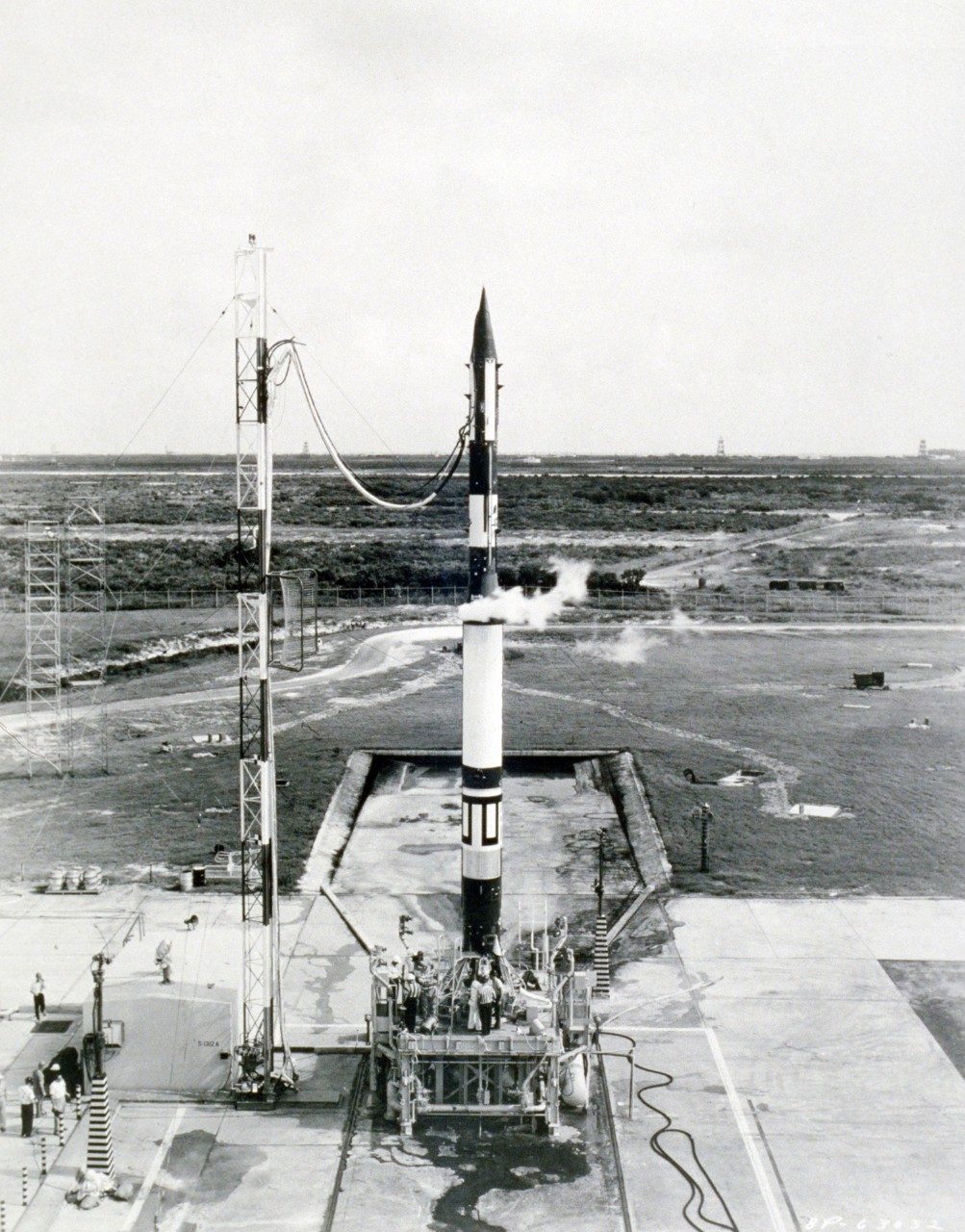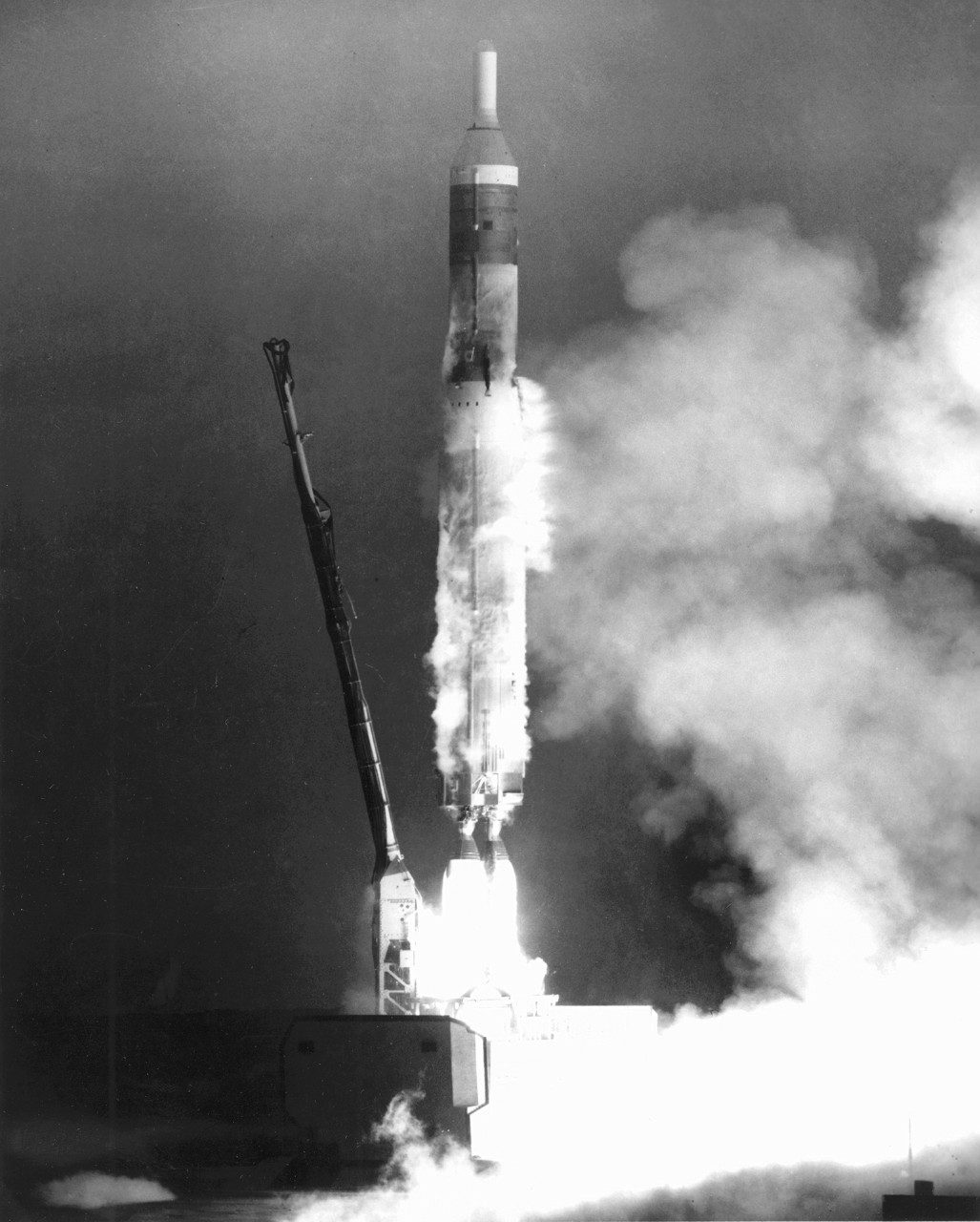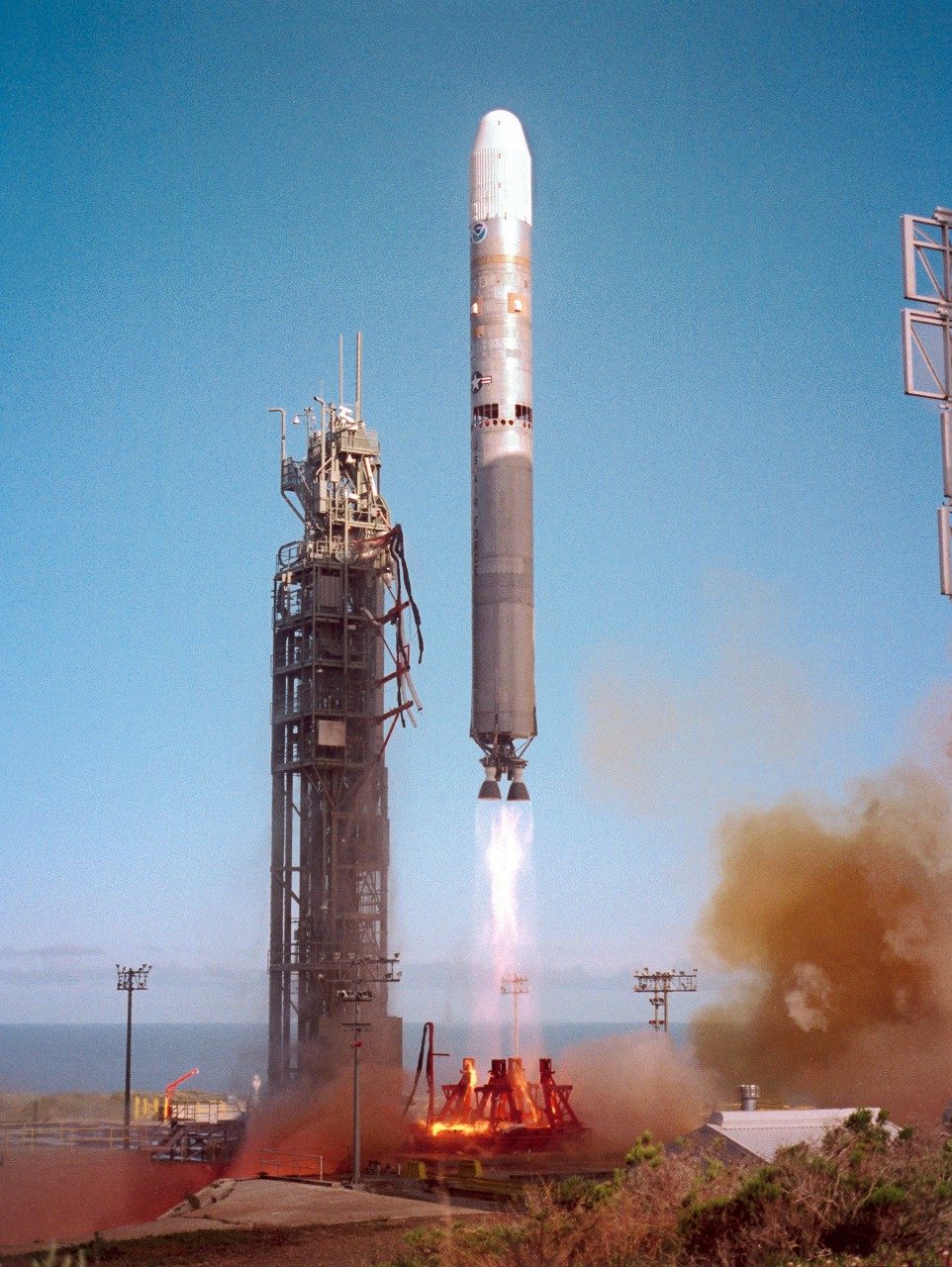Vanguard: The Beginning
In the aftermath of World War II, the United States looked to their next great challenge: conquering space. In 1946, a leading think tank issued a report stating, “The achievement of a satellite craft by the United States would inflame the imagination of mankind.” Such an accomplishment would keep America ahead of the rival Soviet Union. In the space race, there was more at stake than an ideological victory.
The first step in reaching for the stars was to soar to the skies. The United States contracted the Martin Company to design and build the first Viking sounding rocket in 1949. Early results were promising. In 1954, the Viking 11 reached a record-setting 158 miles above the Earth’s surface and took the first photographs of Earth from space. Soon, the Martin Company was announced as the prime contractor for Project Vanguard, pursuing President Eisenhower’s goal of placing a man-made satellite in orbit.
The race to space took on a new sense of urgency on October 4, 1957, when the Soviet Union placed Sputnik I in orbit around the Earth. Americans stood outdoors at night to watch for the artificial satellite as it passed overhead. The space race was on.
America’s hopes to place a satellite in orbit were put on Project Vanguard. Although the effort remained highly experimental, the government and the Martin team pressed on.

Overcoming Early Setbacks
On December 6, 1957, Vanguard TV-3 was set to be the first U.S. launch attempt since Sputnik. With the world watching, the countdown clock reached zero, the Vanguard rocket lifted slightly off the launch pad—and settled back to its cradle in an explosion of fire and fuel.
Despite suffering a very public setback, the team persevered. Armed with hard-won lessons from the failed Vanguard launch, success quickly followed. On January 31, 1958, the Army’s Explorer I placed the first American satellite in orbit, and in March of that year the Martin-built Vanguard TV-4 took off on St. Patrick’s Day—with a shamrock taped to the side—placing another satellite in orbit. In July, President Eisenhower signed the National Aeronautics and Space Act of 1958, effectively creating NASA.

Zero Defects
The Martin Company’s Orlando plant was built in 1957 in anticipation of increased activity at the rocket launch site at Cape Canaveral, on the Florida coast. It was there that a far-reaching and influential program developed that affected not only America’s space program, but nearly every quality control program in the world: Zero Defects. During World War II–era aircraft production, minor defects were tolerated and could sometimes be addressed during maintenance. But as Vanguard had proven, multi-stage rockets did not allow any room for error. Zero Defects meant getting it right the first time. With Zero Defects reducing plant rejections by 25 percent and scrap costs by 30 percent, a system was in place to produce better products more efficiently than ever before.
The Zero Defects approach did not just apply to the production process. In 1965, the Martin Company’s Malfunction Detection System shut down the launch of Gemini VI-A just before liftoff, ensuring the safety of crew members and the mission itself. The system had detected an umbilical tail plug that had prematurely fallen out of the rocket. The launch was rescheduled and three days later, Gemini VI-A successfully lifted off into space, achieving the first manned rendezvous with another craft, its sister-ship Gemini VII.
In 1961, President John F. Kennedy committed the nation to putting a man on the Moon by decade’s end. From 1962 through 1966, the Martin Company’s Titan rockets powered the Gemini program, allowing NASA to perfect the orbital maneuvers and extravehicular activity that would support missions to the Moon.
“One Small Step for Man…”

A New Era of Exploration
Today, Lockheed Martin is building the Orion Multi-Purpose Crew Vehicle for NASA, the next generation of human exploration spacecraft. Orion’s design may look like that of the Apollo capsules, but its 21st century state of the art flight systems and capabilities are vast leaps ahead of earlier forays into space. Orion is the nation’s first interplanetary spacecraft designed to carry astronauts beyond low Earth orbit on long-duration, deep-space missions to destinations such as asteroids, Lagrangian Points or the Moon and ultimately to Mars.
For more than 50 years, Lockheed Martin heritage companies have led the way in the design and production of spacecraft that have helped scientists and explorers understand our planet from new perspectives, constantly revealing the unknown. The Lockheed Martin legacy of space exploration through spacecraft, observatories, scientific instruments and payloads has enabled thousands of scientists and researchers to explore and broaden our understanding of the universe.
Lockheed Martin continues to work to achieve the dreams of all who would see humankind reach beyond the green and blue of our planet to the red sands of another. The race isn’t over. The Moon was simply the first step.
Sources and Additional Reading
- Boyne, Beyond the Horizons
- Erickson, Into the Unknown Together
- Garber, Sputnik and the Dawn of the Space Age
- Harwood, Raise Heaven & Earth
- RAND Corporation, Preliminary Design of an Experimental World-Circling Spaceship
- Schefter, The Race




